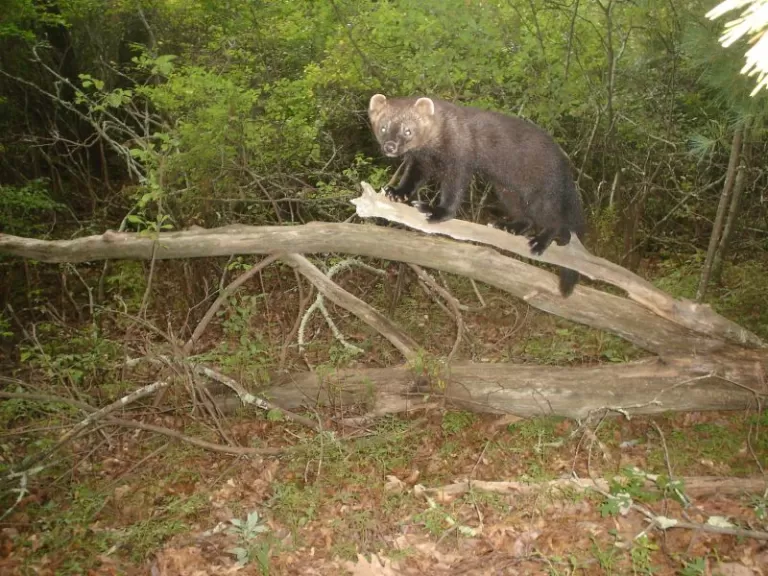Pollinator Garden
The gardens, fields, and woodland of Wolbach are home to numerous species of wildlife. Our bee hotel also provides nesting habitat for solitary bees and wasps.
The gardens, fields, and woodland of Wolbach are home to numerous species of wildlife. Our bee hotel also provides nesting habitat for solitary bees and wasps.

Wildlife populations have been changing following the reforestation of the New England landscape. Beaver, turkey, muskrat, fisher, coyote, and deer have returned to the land or have increased in numbers. As you walk along the Lewis Trail, be on the lookout for tracks and signs of animal life, especially along Winter Brook and areas near water. During the winter, many animals stick around whether they’re hibernating or just surviving the harsh New England weather.
Whitetail deer (Odocoileus virginianus) rely on their thick coat of fur to keep them warm. Their hair, which is hollow and filled with air, helps insulate the deer and trap body heat. Additionally, deer slow down their heartbeat and move less in order to conserve calories.
Photo: White-tailed deer, photographed by Dan Trippe.

Another animal that stays active during the winter months is the fisher (Martes pennanti). Despite commonly being referred to as a “fisher cat,” it is not a cat nor does it fish. It is a solitary animal in the weasel family that relies on other animals' meat and fruit for sustenance.
Another common misconception about the fisher is that it screams; the infamous screeching noise that is falsely attributed to the mainly silent fisher actually comes from red foxes (Vulpes vulpes).
Photo: Fisher, photographed with an automatically triggered wildlife camera by Craig Smith.

Inside the pollinator garden, you will see a structure containing old logs with holes bored into them. This is our bee hotel. Bee hotels are home to solitary bees, a type of insect that does not live in a hive or create honey. Because solitary bees do not have a hive to protect, they are less likely to sting people.
If you look closely at the holes in the logs where the bees nest, you will find small mud coverings that protect the young bee larvae. Solitary bees reproduce by laying their eggs in these small holes, which are often created by beetles. The larvae spend the winter developing and eating a pollen store left by the mother. In the spring, when the bee is large enough, it will break through the mud wall and begin pollinating plants.
Photo: Eastern carpenter bee, photographed by Steve Forman.
Back to Wolbach Farm Interpretive Trail main page.